
Laser Level Measurement – Review of Applications and Benefits
Don Horne
Introduction
The laser was invented 60 years ago. It is a unique technology that has been used in a growing number of applications ever since. From laser surgery to industrial processing, lasers are making our lives better and easier. Introduced more than 15 years ago, lasers are also changing the way to perform level measurement. As we will see in this article, lasers present many benefits over other non-contact level measurement technologies in numerous applications.
Review of applications and benefits of using lasers
In non-contact level measurement, ultrasonic and open-path radar sensors are well known in the industry. However, in recent years, laser level measurement has been gaining popularity in several applications due to its versatility and ease-of-use.
Laser transmitters send short pulses and measure the time of flight of pulses that are reflected from a surface to determine distance. The laser has a very narrow field of view (<0.3°), so it only detects returns from the surface to be measured and is not impacted by surrounding objects.
Rugged laser level transmitters designed to meet all industrial applications are available on the market as illustrated below.
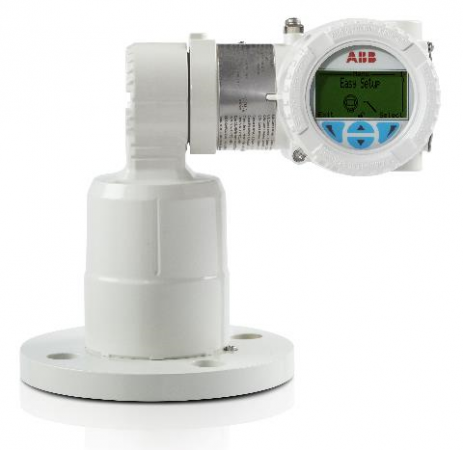
LLT100 industrial laser transmitter from ABB Inc.
Laser transmitters provide non-contact level measurement of any material, solid or liquid, independently of their properties or conditions. With their narrow laser beam, lasers can avoid obstructions and can be installed near vessel walls or in tanks with mixing blades, grids, or obstructions. Laser transmitters measure continuously and provide rapid surface change tracking. In addition, their advanced signal processing delivers reliable measurements in the presence of mixers and in dusty, foggy, and narrow environments. Even clear liquids are measurable and are no longer a limitation for laser level devices. Lasers are easy to use and configure and are well suited for applications in challenging environments.
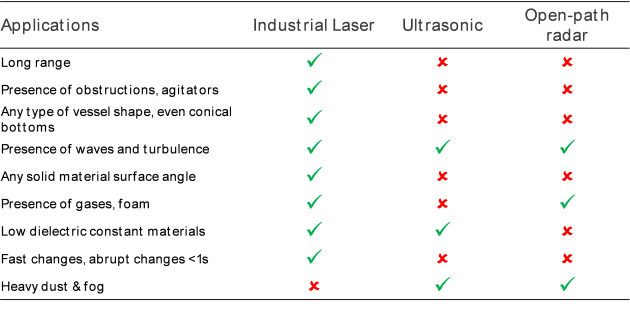
Laser benefits
Lasers in the mining industry
Crusher level control is a typical application for lasers in the mining industry. Feed control is crucial as crushers must be fed continuously to prevent serious damages to the equipment and optimize productivity. It is imperative to maintain a ‘choke’ level and to avoid running the crusher empty. Level measurement prevents overfilling and dropping rocks directly on metal in the surge bin or crusher, both of which will cause damage and loss of up time. The laser beam detects the rocks level accurately, even in the presence of dust. This technology is immune from the effect of noise, vibrations, ambient air conditions, and the material angle. Furthermore, since the laser beam is narrow, being only a few centimetres in diameter even at more than 30 m (100 ft), it does not interfere with the vessel side or other obstructions. With thousands of installations around the world, industrial laser products have been providing accurate and reliable control of crusher operation for many years.
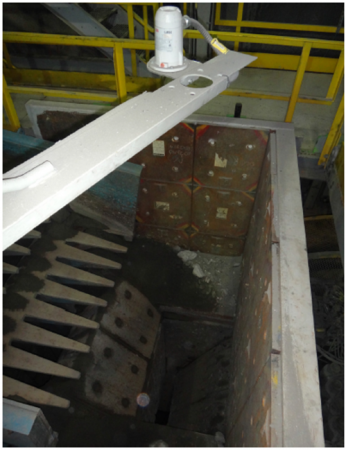
Crusher level measurement with laser in the mining industry.
Lasers in the oil & gas industry
API oil-water separators are used to separate oil and suspended solids from refinery wastewater effluents. Oil and water are then stored in tanks, which need monitoring. Industrial lasers are used in API separators to measure water and oil levels in storage tanks. Measurements are independent of the dielectric constant of the material, and the laser is not affected by droplets of water on its window. It provides reliable, simple, non-contact level measurement. Tanks of all sorts need monitoring and they can contain a wide variety of materials. Laser level measurement provides efficient measurement of any liquid. Should the liquid in the tank change, no recalibration is required with laser, as accuracy will not be affected.
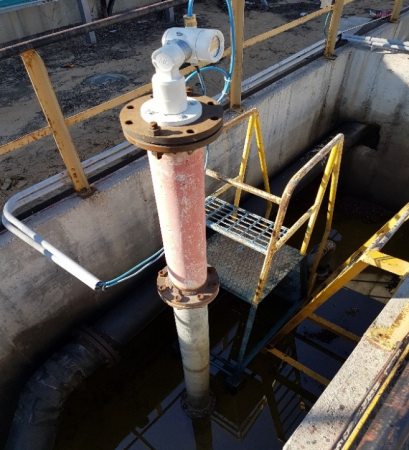
Oil tank level measurement through a long narrow pipe with laser.
Lasers in water & wastewater applications
Laser transmitters have been used successfully in some of the most demanding applications in the water and wastewater industry such as stilling wells, pumping and lift stations, sump tanks, and digesters.
Measuring dirty water level in a stilling well is a difficult application. Over the course of a few days, the dirty water will coat everything. This buildup on the tank wall or surfaces creates significant problems for most level technologies. For instance, measurement products in contact with the water will require costly maintenance every week. When using laser measurement, it is possible to measure water level until buildup is so severe that it almost completely blocks the stilling well, which will typically take about six weeks. The use of lasers for level measurement lead to significant maintenance cost reductions.
The lift station is specifically designed for the pumping of waste or sewage material to a higher elevation. Sewage has water intermixed with various solids and often has stringy debris.
Sewage generates poisonous gases, creating a hazardous location. Contrary to other sensors, laser transmitters are positioned above lift station providing increased safety and easy access to the device. Another benefit is that due to their very narrow laser beam, lasers can measure all the way to the bottom of the well even in the presence of internal structures within the well.
In digesters, the organic components of the sludge are decomposed. Combustible gases such as methane are released from the sludge. The laser provides reliable level measurement and is unaffected by density changes, foam, gas concentration and pressure fluctuations. Also, lasers can work reliably even in the presence of agitators which is a key benefit for this application.
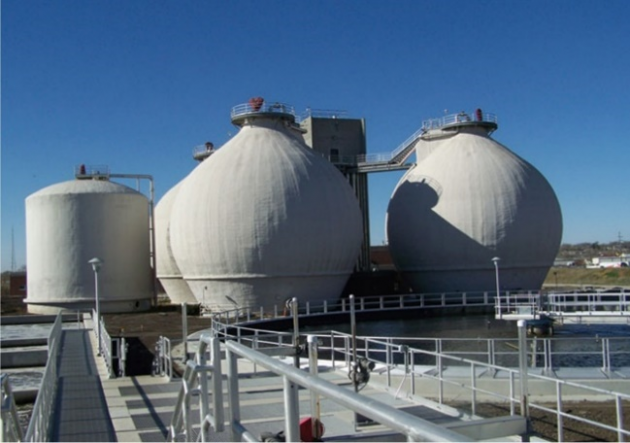
Level measurement with laser in digesters.
Lasers in the plastics industry
Plastic manufacturers are typically large petrochemical and chemical companies which produce and supply to the rest of the chain raw plastic material, mostly in the form of pellets. Plastic manufacturers and plastic converters will typically store these plastic pellets in storage silos and use level measurement solution for live inventory reporting. Narrow and tall storage silos present a challenge for any beam spread technology. Laser level measurement has been used with great success in this application due to its narrow beam and ability to measure to the complete silo bottom. Another important advantage of using lasers in these applications is that silos or day bins are usually identical as illustrated below. So, contrary to other technologies, laser levels only need to be configured for the first silo. This configuration can then be used for all remaining silos which makes installation and commissioning easier, faster, and less costly.
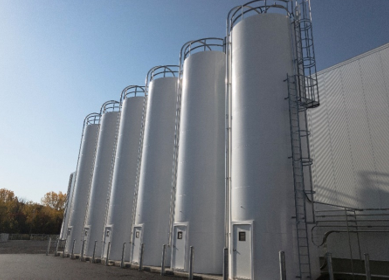
Laser level measurement of plastic pellets in tall and narrow storage tanks.
Lasers for foam measurement and control
Foaming can be present in many industrial processes. Foam can be an integral part of the manufacturing process or it can be an undesirable side effect. The production of foam can be the source of costly problems such as environmental pollution, reduced yields, production downtime, and cleaning costs in case of overfills. Excess foam can cause significant damages to equipment such as pumps and filters. So, the use of an accurate and reliable foam measurement technology is needed as it can bring substantial savings to businesses through reduce use of foaming agents, better process control, increased throughput, reduced product losses and fewer equipment failures. Laser is the best technology to measure the top of dense foam and much more reliable than anything else on the market. Ultrasonic or open-path radars will lose signal from time to time, not the laser.
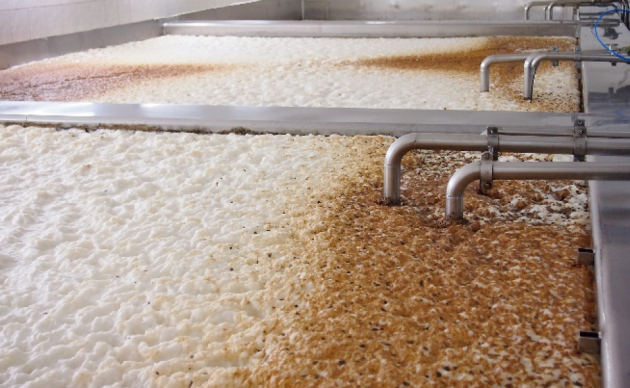
Top of foam measurement with laser in the brewing industry.
Conclusion
In conclusion, laser transmitters innovative technology makes possible level measurement in the most demanding applications in all industries. It is a very simple instrument to use, as no echo mapping is required. It is an easy to use, easy to install, and very reliable product that is not affected by local structures or changes in the properties of the material to be measured.
ABB
